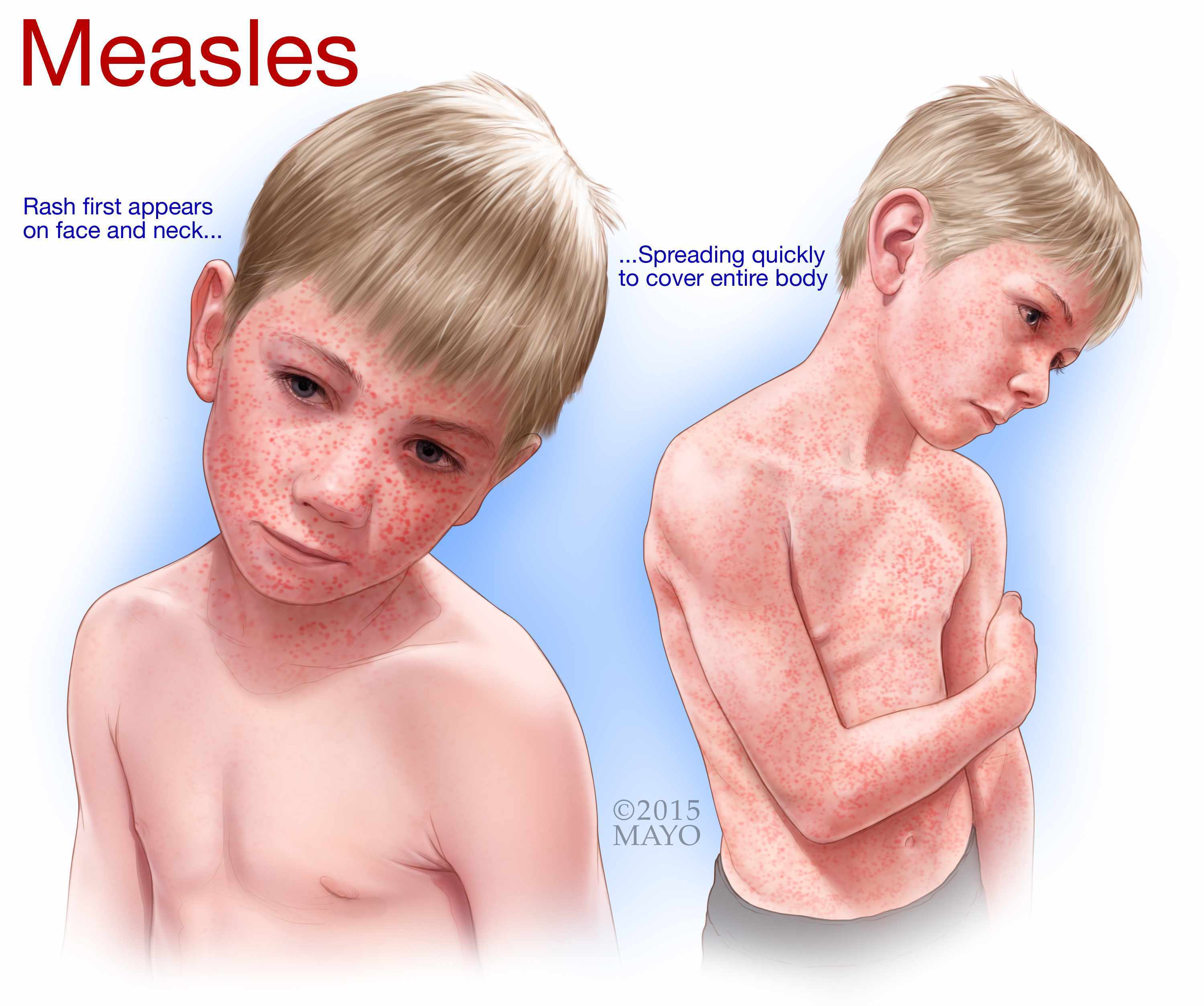-
Featured News
More about measles

Measles is a childhood infection caused by a virus. Once quite common, measles can now almost always be prevented with a vaccine. Signs and symptoms of measles include cough, runny nose, inflamed eyes, sore throat and a fever. Measles also cause a red, blotchy rash that usually appears first on the face and behind the ears, then spreads downward to the chest and back and finally to the feet.
Also called rubeola, measles can be serious and even fatal for small children. While death rates have been falling worldwide as more children receive the measles vaccine, the disease still kills more than 100,000 people a year, most under the age of 5.
Risk factors for measles
- Being unvaccinated. If you haven't received the vaccine for measles, you're much more likely to develop the disease.
- Traveling internationally. If you travel to developing countries, where measles is more common, you're at higher risk of catching the disease.
- Having a vitamin A deficiency. If you don't have enough vitamin A in your diet, you're more likely to contract measles and to have more-severe symptoms.
Signs and symptoms
- Fever
- Dry cough
- Runny nose
- Sore throat
- Inflamed eyes (conjunctivitis)
- Tiny white spots with bluish-white centers on a red background found inside the mouth on the inner lining of the cheek — also called Koplik's spots
- A skin rash made up of large, flat blotches that often flow into one another
- Infection and incubation. For the first 10 to 14 days after you're infected, the measles virus incubates. You have no signs or symptoms of measles during this time.
- Nonspecific signs and symptoms. Measles typically begins with a mild to moderate fever, often accompanied by a persistent cough, runny nose, inflamed eyes (conjunctivitis) and sore throat. This relatively mild illness may last two or three days.
- Acute illness and rash. The rash consists of small red spots, some of which are slightly raised. Spots and bumps in tight clusters give the skin a splotchy red appearance. The face breaks out first, particularly behind the ears and along the hairline.Over the next few days, the rash spreads down the arms and trunk, then over the thighs, lower legs and feet. At the same time, fever rises sharply, often as high as 104 to 105.8 F (40 to 41 C). The measles rash gradually recedes, fading first from the face and last from the thighs and feet.
- Communicable period. A person with measles can spread the virus to others for about eight days, starting four days before the rash appears and ending when the rash has been present for four days.
Watch: Dr. Tosh talks about measles.
Journalists: Broadcast-quality sound bites with Dr. Tosh are in the downloads.
Complications of measles
- Ear infection. One of the most common complications of measles is a bacterial ear infection.
- Bronchitis, laryngitis or croup. Measles may lead to inflammation of your voice box (larynx) or inflammation of the inner walls that line the main air passageways of your lungs (bronchial tubes).
- Pneumonia. Pneumonia is a common complication of measles. People with compromised immune systems can develop an especially dangerous variety of pneumonia that is sometimes fatal.
- Encephalitis. About 1 in 1,000 people with measles develops encephalitis, an inflammation of the brain that may cause vomiting, convulsions, and, rarely, coma or even death. Encephalitis can closely follow measles, or it can occur months later.
- Pregnancy problems. If you're pregnant, you need to take special care to avoid measles because the disease can cause pregnancy loss, preterm labor or low birth weight.
- Low platelet count (thrombocytopenia). Measles may lead to a decrease in platelets — the type of blood cells that are essential for blood clotting.
When to see a doctor
Call your doctor if you think you or your child may have been exposed to measles or if you or your child has a rash resembling measles. Review your family's immunization records with your doctor, especially before starting elementary school, before college and before international travel.







